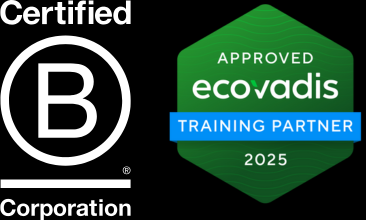The aim of this guide is to help small and medium-sized companies (SMEs) improve their corporate sustainability and responsibility in the environmental, social and governance (ESG) fields in practice. With the development of the ESG market, legislative updates and changes in the expectations of customers, partners and investors, the field of sustainability plays an increasingly important role in building a strong and competitive business.
Part 3 of our ESG guide showed us how to identify and engage with stakeholders. Now, in part 4, we're focusing on identifying your ESG material topics. This is about choosing the ESG activities that are most relevant to your company, based on your conversations with stakeholders.
Identifying your ESG material topics
Based on the dialogue with your key stakeholders, topics will arise that must be considered during the subsequent materiality analysis. Based on this analysis, your so-called "material topics" are identified, indicating your key impacts on sustainability.
The ESRS requires companies to implement the concept of “double materiality” when identifying their material topics. Double materiality requires looking at the company’s external impacts (inside-out view, otherwise known as its externalities) and the financial risks and opportunities it faces (outside-in view) due to sustainability issues. Topics can be material either from the impact or financial perspective or both.
Key questions in mapping out material topics:
- What are the issues where we have a significant positive or negative, actual or potential environmental, social or governance-related impact in the short, medium or long term?
- How could the above impacts, or our dependencies on resources (e.g. natural, human, social), result in financial risks or opportunities for our business?
- What issues do our key stakeholders consider important in their relationship with us?
- What ESG issues are in our power to control or influence?
- How do these topics relate to our vision, mission and values? What's beyond our sphere of influence?
- How do our issues fit into the wider sustainability context?
Once you have a list of material topics, you can prioritise them with the help of a tool such as a materiality matrix or the double materiality guidelines provided by the ESRS.
Sample material topics by stakeholder

In part 5, we'll move on how to collect and report your ESG data.

